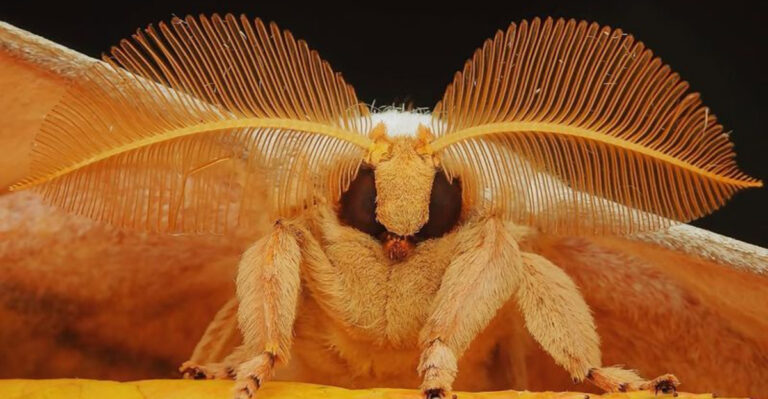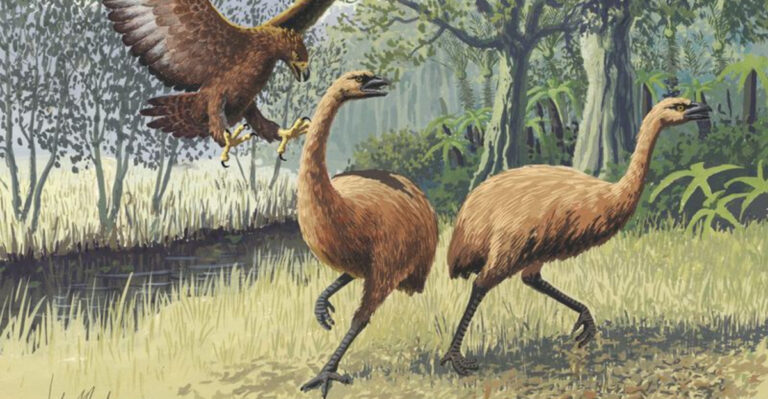12 Dangerous Water Snakes Found In Texas
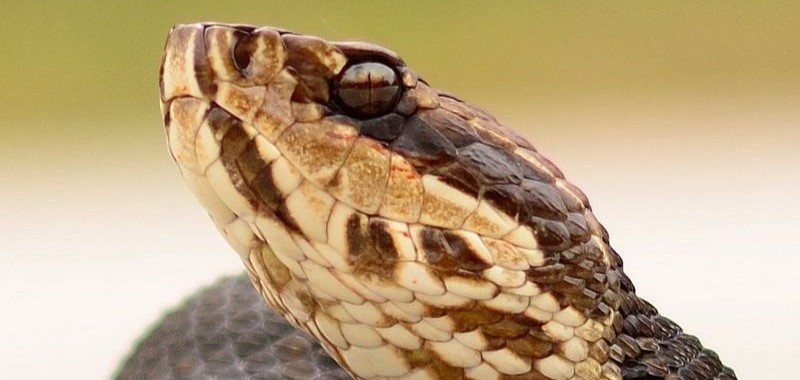
Texas is known for its rich biodiversity, home to many species of water snakes. While most of these snakes are harmless, some can pose risks to humans and pets.
This guide will introduce you to water snakes found in Texas, focusing on their unique features and behaviors.
1. Western Ribbon Snake
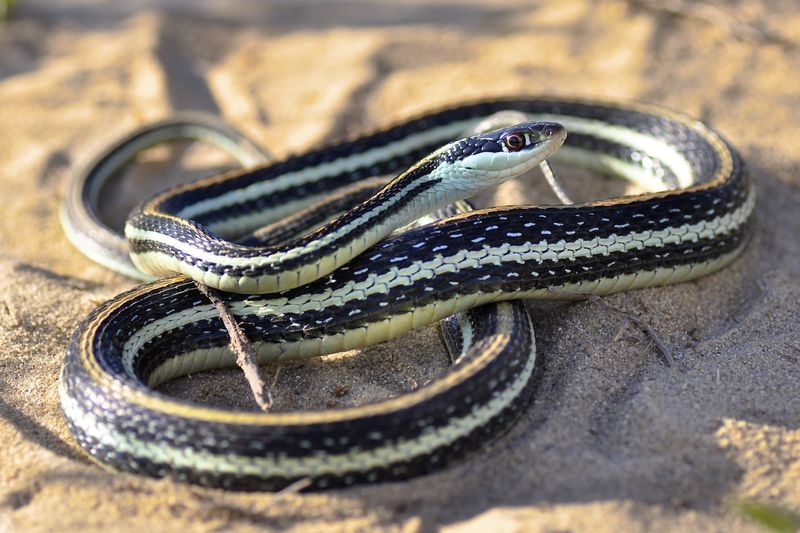
The Western Ribbon Snake is a non-venomous species with a long, slender body and striking stripes. Found near water bodies in Texas, it’s often seen slithering along riverbanks and marshes.
It feeds on small amphibians and fish, using speed and precision to catch its prey. This snake helps maintain the ecosystem by controlling prey populations.
Though vibrant in appearance, the Western Ribbon Snake is harmless and prefers to flee from threats. By observing from a distance, we can appreciate its beauty and ecological role.
2. Nerodia Harbinger
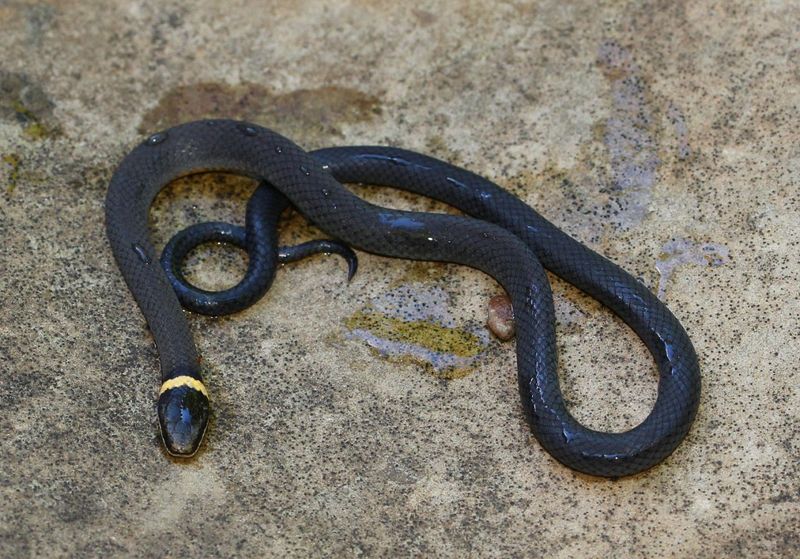
With a name as intriguing as its appearance, the Nerodia Harbinger is a lesser-known water snake in Texas.
Its banded pattern is captivating, creating a mesmerizing visual effect as it moves through the water.
Known for its curiosity, this snake often approaches humans, making it one of the more observable water snakes.
However, it poses no threat, as it is non-venomous and prefers a diet of small fish and amphibians.
3. Broad-Banded Water Snake
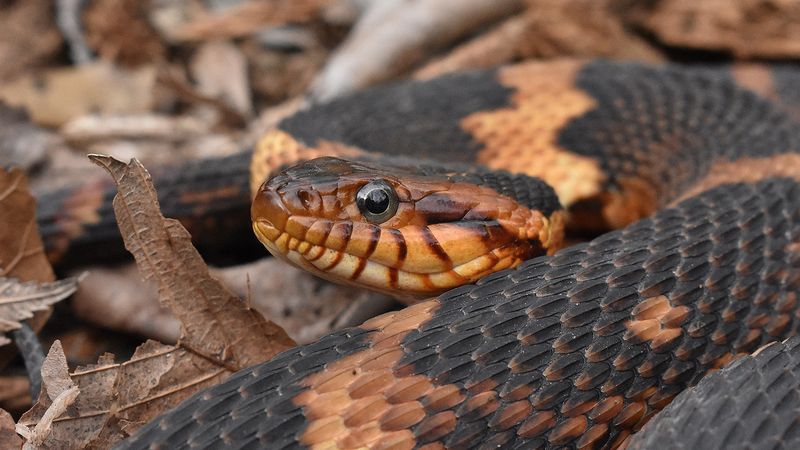
The Broad-banded Water Snake is a non-venomous snake with wide bands of reddish or brownish color.
Found in eastern Texas, it’s often spotted near swamps, marshes, and riverbanks.
It’s sometimes confused with the venomous Cottonmouth but is harmless to humans. These snakes mainly feed on fish and frogs, using their keen senses to hunt.
An excellent swimmer, the Broad-banded Water Snake gracefully glides through the water.
4. Diamondback Water Snake
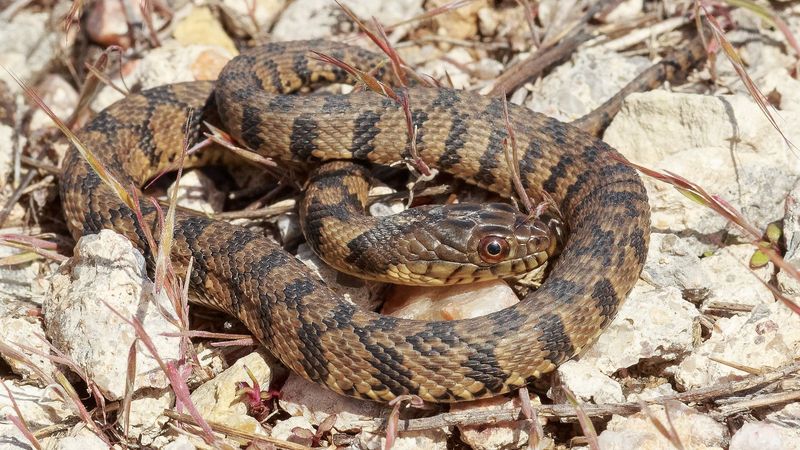
The Diamondback Water Snake, with its striking diamond pattern, is a harmless, non-venomous snake.
It’s commonly found in slow-moving or stagnant water, like ponds and lakes.
These snakes can grow up to five feet long and enjoy basking on branches or rocks in the sun.
Despite their intimidating look, they’re not aggressive and tend to run away when humans get too close.
Their diet consists mainly of fish and amphibians, which they catch with fast reflexes. By controlling fish populations, they play a crucial role in their aquatic ecosystems.
5. Banded Water Snake
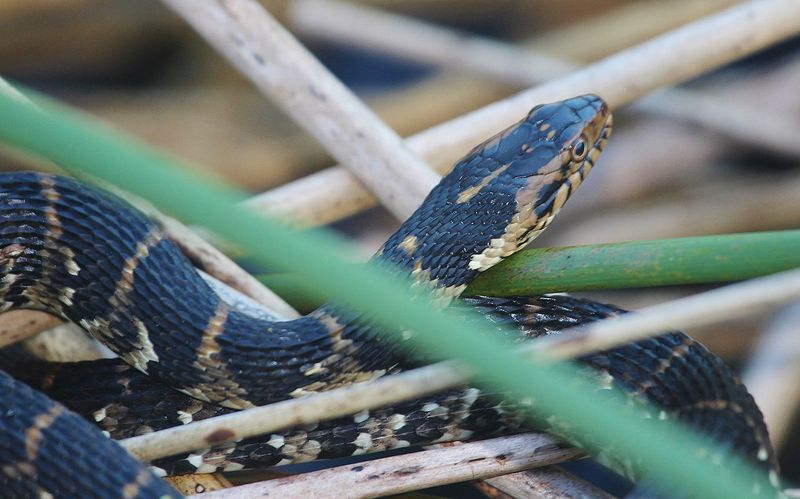
The Banded Water Snake is a non-venomous snake with alternating dark and light bands, commonly found in Texas’ freshwater regions.
It thrives in rivers, lakes, and swamps, often basking on branches or bushes near water.
Though they look fierce, Banded Water Snakes are harmless to humans. They feed mainly on fish and amphibians, using their agility and hunting skills to capture prey.
If threatened, they may release a foul-smelling musk but are unlikely to bite.
6. Plain-Bellied Water Snake
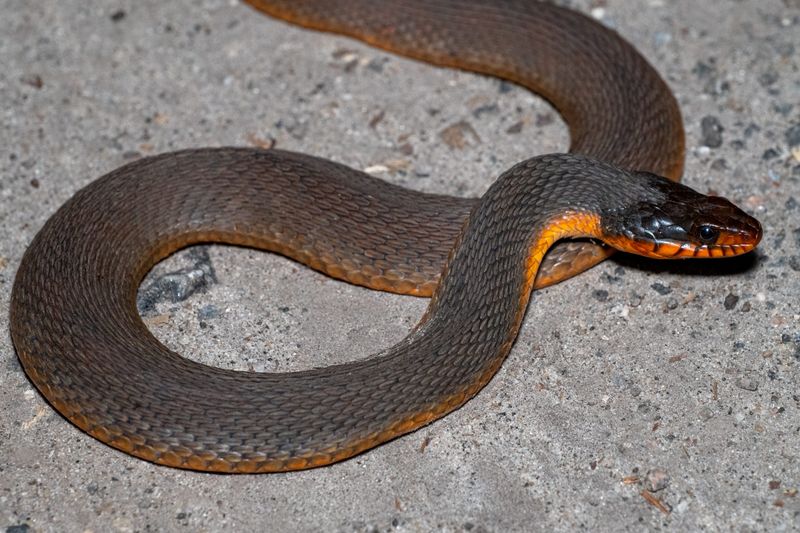
The Plain-bellied Water Snake is easily recognized by its plain-colored belly and dark dorsal scales.
Found across Texas, it thrives in swamps, ponds, and slow-moving streams.
Though they may look intimidating, these non-venomous snakes are harmless to humans. They play a key role in controlling fish and amphibian populations in their ecosystems.
With colors ranging from dark brown to black and a distinctive red or yellow belly, they’re often seen basking on logs or rocks near water.
7. Yellow-Bellied Water Snake
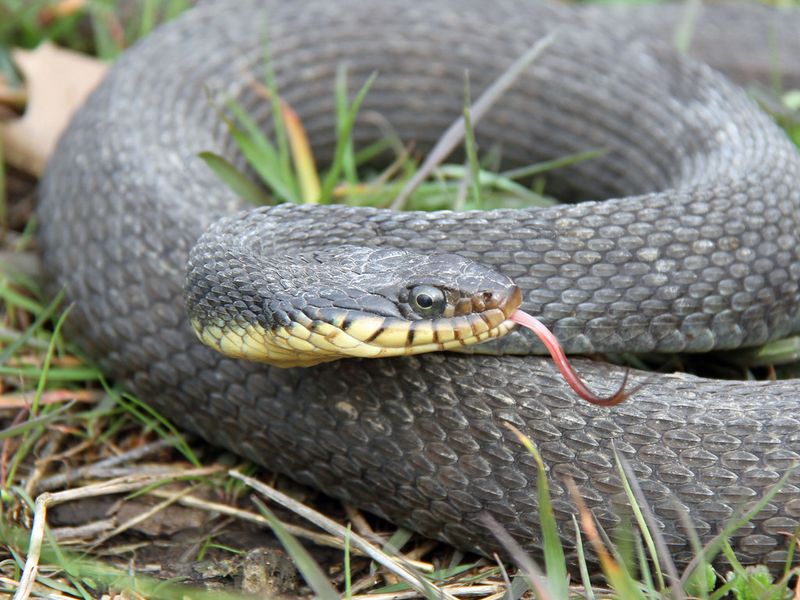
The Yellow-bellied Water Snake is a non-venomous species with a vibrant yellow underside and olive-green back.
Found in eastern Texas, they thrive in wetlands like marshes and slow-moving rivers.
These snakes can grow up to four feet and are known for their stunning coloration.
Though they may look intimidating, they’re harmless to humans and primarily hunt at night.
They feed on fish, frogs, and small mammals, making them skilled nocturnal hunters. Their ability to swim gracefully through water shows their adaptability to aquatic life.
8. Salt Marsh Snake
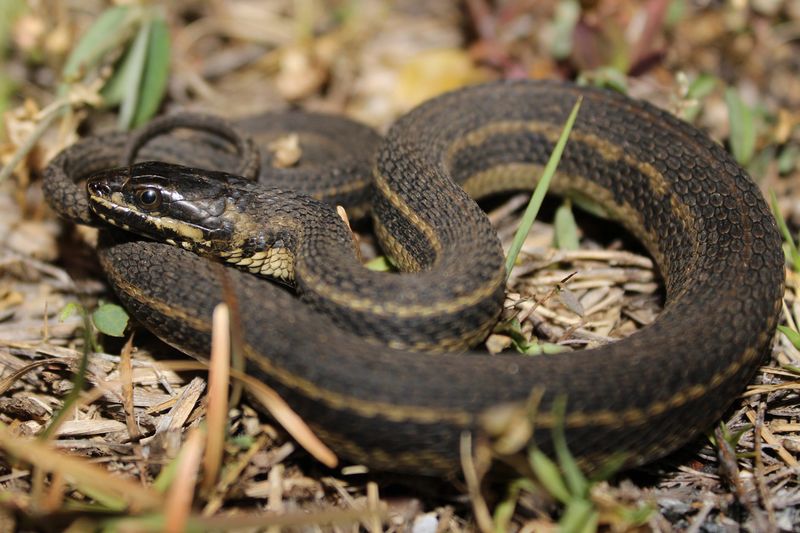
The Salt Marsh Snake is a unique species found in Texas’ coastal regions, especially in salt marshes.
Its striking scale patterns vary from bands to blotches, making each snake look different.
This non-venomous snake thrives in saline environments, feeding on fish and small invertebrates. Its ability to tolerate saltwater sets it apart from other freshwater snakes.
Generally not aggressive, the Salt Marsh Snake will retreat if threatened. Observing it in its habitat offers insight into the health of Texas’ coastal ecosystems.
9. Green Water Snake
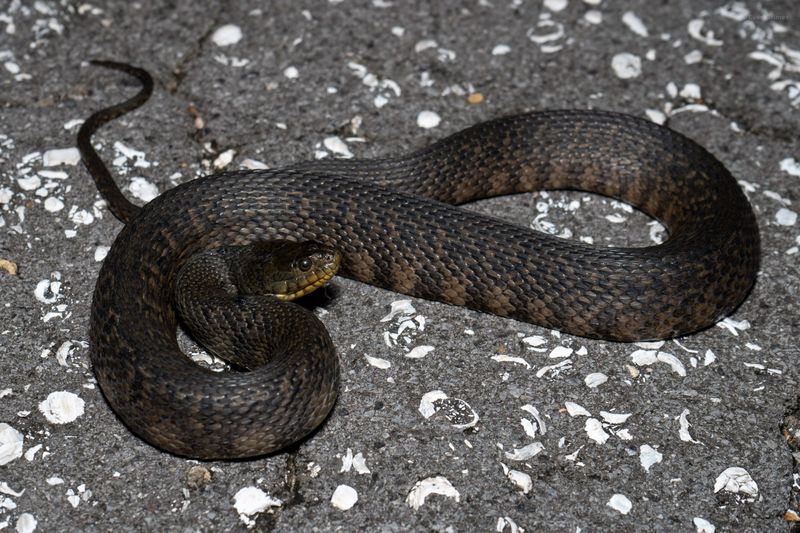
The Green Water Snake is a non-venomous reptile that blends into the lush Texan wetlands.
Its olive-green scales and stout body help it stay hidden from both predators and onlookers.
Preferring calm waters like marshes and swamps, it hunts fish and frogs. As an agile swimmer, the Green Water Snake can quickly dart through water to catch its prey.
Often confused with the venomous Cottonmouth, it’s harmless and tends to avoid humans.
10. Cottonmouth
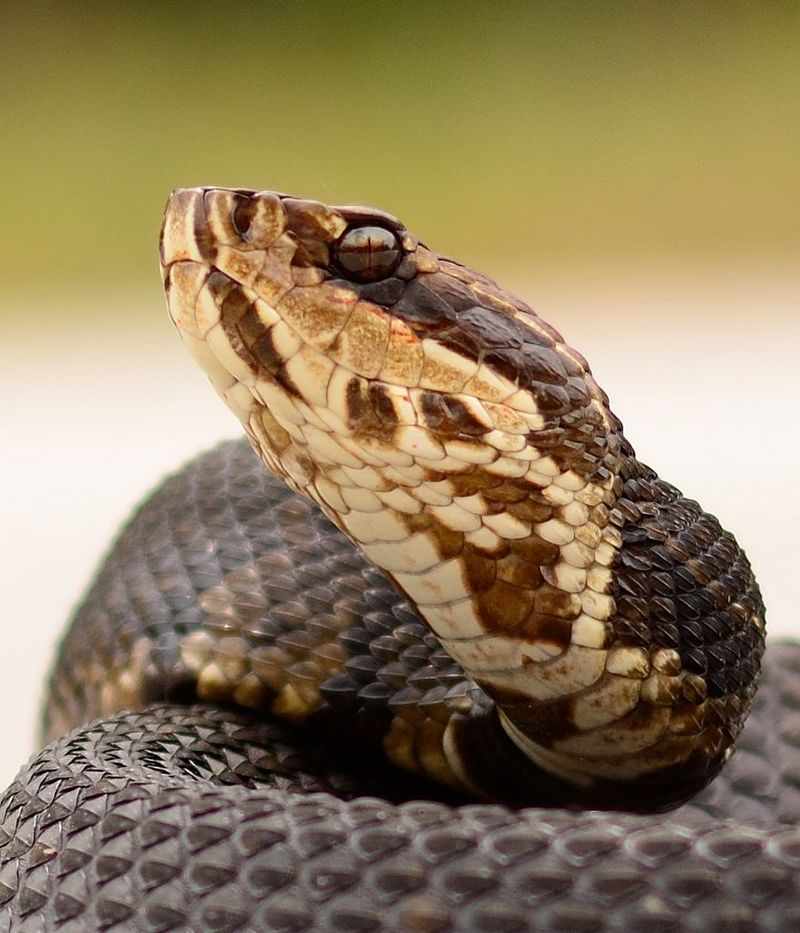
The Cottonmouth, or Water Moccasin, is a venomous snake found in Texas waters. Its distinctive triangular head and dark, crossbanded body make it easy to spot.
These snakes love wetland habitats like swamps, marshes, and river edges. They’re skilled hunters, feeding on fish, amphibians, and small mammals.
If you spot one, keep your distance! Cottonmouths will often open their mouths to show their white lining, warning you of danger.
11. Blotched Water Snake
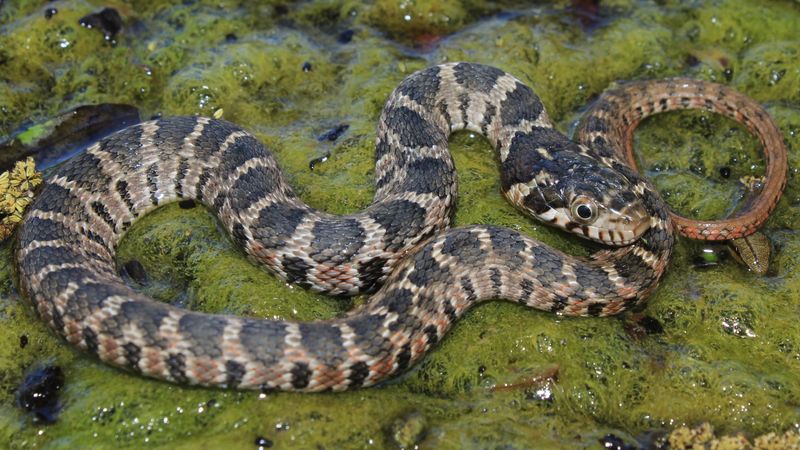
The blotched water snake is a sight to behold in Texan rivers.
With its striking pattern of dark blotches on a lighter background, it easily camouflages among the rocks and reeds. This non-venomous snake is often mistaken for the venomous cottonmouth due to its appearance.
Unlike its venomous counterpart, the blotched water snake is harmless to humans, preferring to feast on fish and frogs.
Its agile movements and expert swimming abilities make it a fascinating creature to observe in its natural habitat.
12. Rough Green Snake
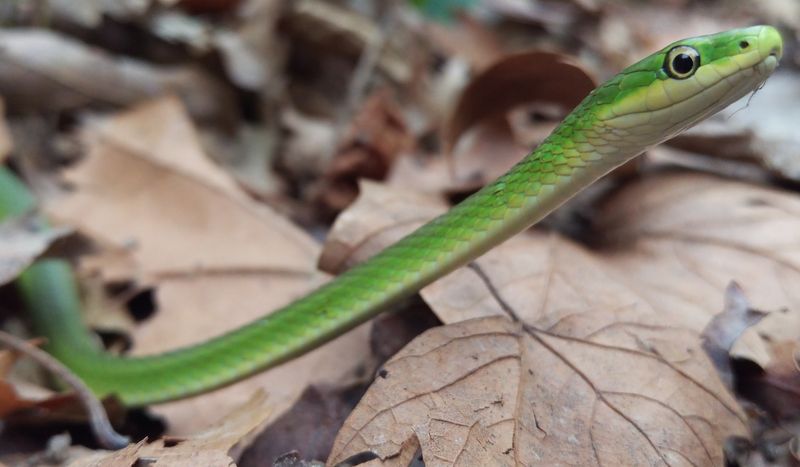
The Rough Green Snake is a non-venomous species with a vibrant green color and slender body. It’s often spotted in the trees along Texas rivers and streams.
This arboreal snake blends effortlessly with the foliage, making it a master of camouflage. It prefers hunting insects and spiders, helping control local pest populations.
Though not a true water snake, it’s commonly found near damp environments.



